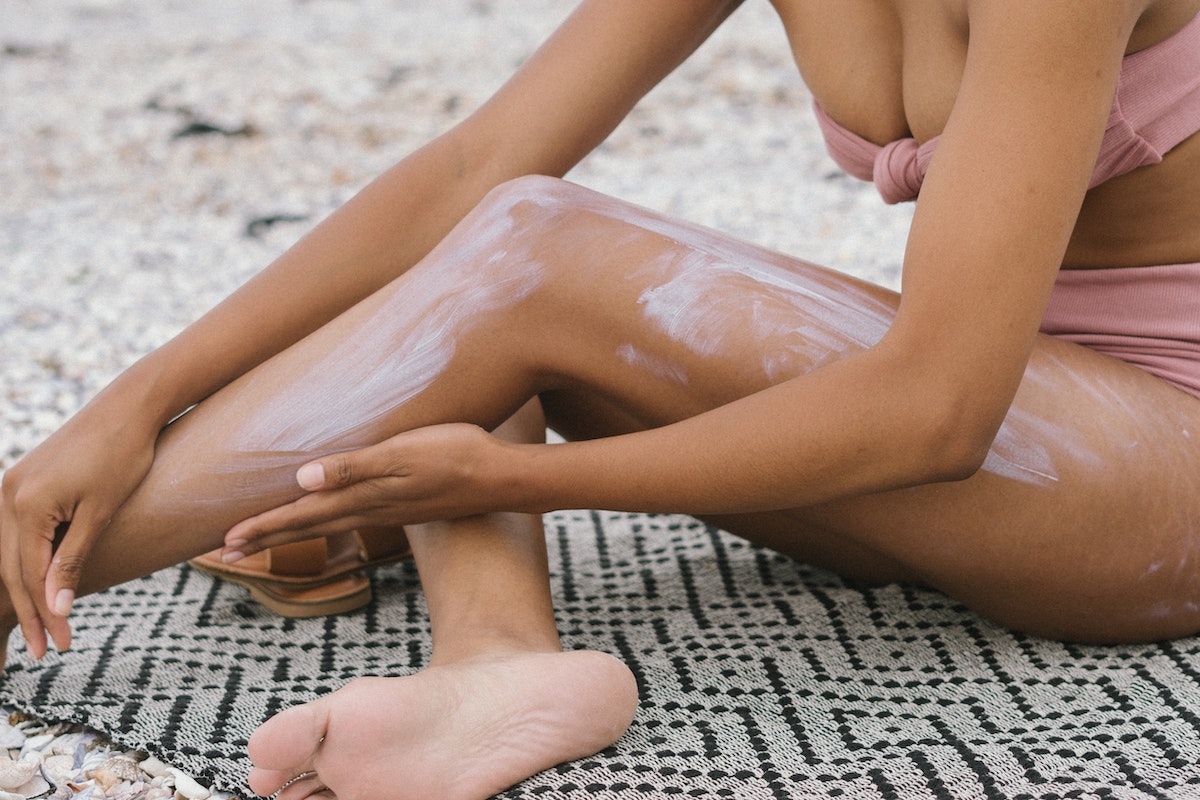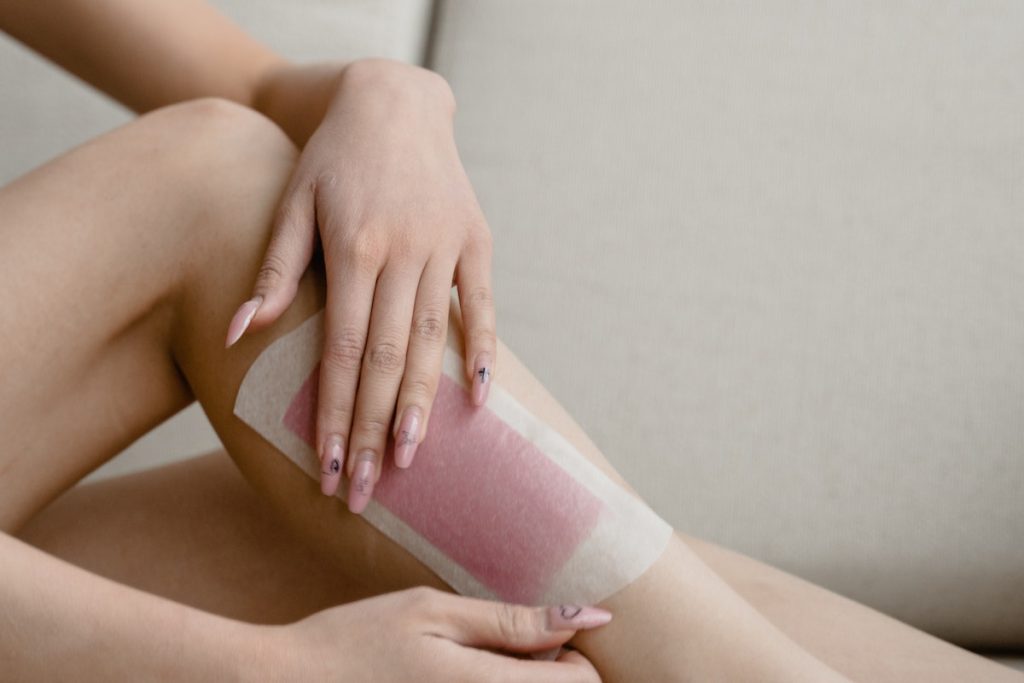Hair growth is a natural process in the human body, but societal expectations often lead individuals, especially women, to feel insecure about unwanted hair. In a study by Nair and Kelton Global, it was found that a significant 57% of women feel affected by this issue. Seeking solutions, many turn to waxing, a popular hair removal method. In fact, in the United States alone, over 6.39 million individuals utilized waxing services more than four times in 2020. With such a substantial demand, it’s no wonder that the waxing industry is projected to reach a staggering $4.5 billion by 2028.
One common concern for those considering waxing is the question of how long the hair needs to be for effective removal. Additionally, another popular inquiry revolves around whether waxing reduces hair growth in the long run. This article will delve into these queries, debunk myths, and shed light on the truth surrounding the relationship between waxing and hair growth.
- How Does Waxing Work for Hair Removal?
- Does Waxing Reduce Hair Growth
- How to Maximize Waxing Results for Hair Reduction?
- Factors that Affect Hair Growth After Waxing
- Alternative Hair Removal Techniques
- Tips for Effective Hair Growth Reduction
- Other Things You Need to Know About Waxing
- Common Myths on Waxing
- Frequently Asked Questions
How Does Waxing Work for Hair Removal?

Waxing is a widely used method for hair removal that offers longer-lasting results compared to shaving or depilatory creams. The process involves applying warm or cold wax onto the skin in the direction of hair growth. The wax is then quickly pulled off in the opposite direction, taking the hair from the root.
Hair wax removal effectively removes hair from various body parts, including the legs, underarms, bikini area, and facial regions. The wax adheres to the hair follicles, gripping the hair firmly as it hardens. When the wax is swiftly pulled off, it uproots the hair, leaving the skin smooth and hair-free.
It’s important to note that the frequency of waxing sessions also varies from person to person. While some individuals may prefer waxing every four to six weeks, others may find it necessary to wax more frequently. Factors such as hair growth rate, individual hair thickness, and personal preference contribute to determining how much to wax and how often.
Does Waxing Reduce Hair Growth
The notion that waxing reduces hair growth is a commonly discussed topic. However, it’s essential to clarify the truth behind this claim. Waxing, as a hair removal method, focuses on removing hair from the root. When the hair is pulled out from the root, it takes longer to regrow than shaving, where only the visible part of the hair is removed.
While waxing may give the illusion of reduced hair growth, it does not alter the hair follicles or the natural hair growth cycle. Genetics, hormones, and other individual factors primarily determine hair growth patterns and the rate at which hair regrows. Therefore, waxing does not lead to a permanent reduction in hair growth.
However, consistent waxing over time may make the hair appear finer and sparser. That is because repeated waxing can weaken the hair follicles, causing some hairs to become thinner or finer in texture. Additionally, consistent waxing may lead to certain hair follicles ceasing to produce hair. Nonetheless, this effect varies from person to person and is not guaranteed for everyone.
How to Maximize Waxing Results for Hair Reduction?
To maximize waxing results for hair reduction, you can follow these tips:
- Consistent Waxing Schedule: Maintain a regular waxing schedule to stay ahead of hair regrowth. Aim to wax every 4-6 weeks, depending on your hair growth rate and personal preference. Regular waxing ensures that hair is removed at the early stages of regrowth, resulting in smoother skin for longer periods.
- Allow Sufficient Hair Growth: Ensure that your hair is the appropriate length before waxing. Hair should be around 1/4 to 1/2 inch (6-12 mm) long to allow the wax to adhere effectively and remove the hair from the root. Avoid waxing too frequently or too soon after previous sessions to give the hair enough time to grow to the desired length.
- Exfoliate Before Waxing: Prior to waxing, exfoliate the skin gently to remove any dead skin cells and ensure better wax adherence. This helps in achieving a more thorough hair removal and reduces the likelihood of ingrown hairs.
- Optimal Waxing Technique: Make sure to follow proper waxing techniques or seek professional assistance. Apply the wax in the direction of hair growth, hold the skin taut, and remove the wax quickly in the opposite direction. This ensures effective hair removal and minimizes discomfort.
- Post-Wax Care: After waxing, soothe the skin by applying a cooling gel or lotion to reduce redness and inflammation. Avoid hot baths, saunas, and excessive sun exposure for at least 24-48 hours post-waxing. Additionally, exfoliate the skin regularly between waxing sessions to prevent ingrown hairs.
- Be Patient and Consistent: It’s important to remember that individual hair growth patterns and results may vary. Be patient and consistent with your waxing routine to achieve optimal long-term results. Over time, you may notice a reduction in hair thickness and density.
Factors that Affect Hair Growth After Waxing
Different Hair Types and Their Response to Waxing: What to Expect
Hair type plays a role in how hair responds to waxing and the overall effectiveness of hair reduction. Coarse, thick hair tends to be more resistant to waxing, requiring stronger adhesion and potentially resulting in more discomfort during the process. On the other hand, fine hair is generally easier to remove with waxing.
Moreover, the growth cycle of hair varies among individuals. Hair follicles go through active growth (anagen), transitional (catagen), and resting (telogen) phases. Since waxing only targets actively growing hair, not all hair may simultaneously be in the anagen phase. This situation can lead to some hairs being missed during waxing, requiring additional sessions for complete hair removal.
Personal Factors Influencing Hair Growth Reduction: Genetics, Hormones, and Lifestyle
Genetics, hormones, and lifestyle factors also impact hair growth after waxing. Genetic predisposition plays a significant role in determining hair thickness, color, and density. Individuals with a family history of dense hair growth may experience slower hair reduction than those with naturally thinner hair.
Hormonal fluctuations, such as those occurring during pregnancy or menopause, can affect hair growth patterns. Hormonal imbalances can cause increased hair growth or make individual hairs more resistant to waxing.
Lifestyle choices, such as stress levels, nutrition, and overall health, can indirectly influence hair growth. High-stress levels and certain medical conditions may disrupt the hair growth cycle, potentially impacting the effectiveness of hair reduction through waxing.
Managing Expectations: Realistic Goals for Hair Reduction Through Waxing
It’s essential to have realistic expectations regarding hair reduction through waxing. While waxing can provide longer-lasting results compared to shaving, it does not lead to permanent hair removal. Expecting complete hair elimination or a significant reduction in hair growth may result in disappointment.
Consistent waxing over time may lead to finer, sparser hair regrowth for most individuals. Some hair follicles may even cease to produce hair. However, these outcomes vary from person to person and are influenced by genetic and hormonal factors.
To manage expectations, focus on the long-lasting smoothness and convenience of waxing. Enjoy extended periods of hair-free skin between waxing sessions rather than seeking complete hair elimination. By setting realistic goals, you can appreciate the benefits of waxing while understanding its limitations in permanently reducing hair growth.
Alternative Hair Removal Techniques
While waxing is a popular hair removal method, there are various alternatives to consider based on personal preferences and specific needs. Let’s compare waxing with some commonly used methods:
Waxing vs Other Methods
- Shaving: Shaving is a quick and convenient method that removes hair at the surface level. It is painless but requires frequent maintenance as hair regrowth occurs rapidly. Unlike waxing, shaving does not remove hair from the root, resulting in a smoother appearance for a shorter duration.
- Depilatory Creams: Depilatory creams dissolve the hair just below the skin’s surface. They are easy to use and provide smoother skin compared to shaving. However, the results are temporary, and the chemicals in these creams may cause skin irritation for some individuals.
- Epilation: Epilation involves using mechanical devices, such as epilators, to remove hair from the root. Similar to waxing, this method provides longer-lasting results compared to shaving. However, it can be more time-consuming and may cause discomfort, especially for those new to epilation.
Professional Treatment Options
For individuals seeking professional assistance, there are several treatment options available:
- Laser Hair Removal: Laser hair removal uses targeted laser energy to damage hair follicles, inhibiting future hair growth. It offers long-term reduction but multiple sessions are usually required for optimal results. Laser hair removal is more suitable for individuals with light skin tones and dark hair.
- Electrolysis: Electrolysis is a method that involves inserting a fine probe into individual hair follicles to deliver an electric current, destroying the hair root. This process is time-consuming and may require multiple sessions, but it can lead to permanent hair removal.
- Intense Pulsed Light (IPL): IPL uses broad-spectrum light to target hair follicles, reducing hair growth over time. It is less effective on lighter hair colors and darker skin tones.
Hair Growth Inhibitors
Hair growth inhibitors are products that aim to slow down hair regrowth. These products often contain ingredients that interfere with hair growth processes. While they don’t remove hair, they can be used in conjunction with other hair removal methods to extend the time between sessions.
Tips for Effective Hair Growth Reduction

Efficiently reducing hair growth requires a combination of proper techniques, careful considerations, and long-term strategies. Here are some tips to help you achieve effective hair growth reduction:
Choosing the Right Waxing Salon
When opting for professional waxing services, selecting the right salon is crucial. Consider the following factors:
- Reputation and Expertise: Research and choose a salon with a good reputation for providing quality waxing services. Look for experienced estheticians who are skilled in hair removal techniques.
- Hygiene and Cleanliness: Ensure that the salon maintains high standards of cleanliness and hygiene. Clean tools, fresh wax, and proper sanitation protocols are essential for a safe and satisfactory experience.
- Quality Waxing Products: Inquire about the type of waxing products used. High-quality waxes can improve hair removal results and minimize potential skin irritations.
DIY Waxing
If you prefer at-home waxing, follow these tips for effective hair growth reduction:
- Choose the Right Wax: Select a waxing kit suitable for your skin type and hair texture. Consider the area you intend to wax, as different formulas are designed for specific body parts.
- Follow Instructions Carefully: Read and follow the instructions provided with the waxing kit thoroughly. Proper application and removal techniques are crucial for achieving optimal results and minimizing discomfort.
- Prepare Your Skin: Prior to waxing, cleanse and exfoliate the skin to remove any oils, dirt, or dead skin cells. This helps the wax adhere better and reduces the chances of ingrown hairs.
Long-Term Hair Reduction Solutions Beyond Waxing
While waxing can provide temporary hair reduction, consider these long-term solutions for more significant results:
- Laser Hair Removal: Explore professional laser hair removal treatments for long-lasting hair reduction. Laser technology targets hair follicles, inhibiting future growth. Consult a qualified specialist to determine if this option is suitable for you.
- Electrolysis: Electrolysis is a method that targets individual hair follicles with electrical currents to permanently remove hair. It may require multiple sessions but can provide lasting results.
- Prescription Medications: Certain prescription medications can help reduce hair growth, particularly for individuals with excessive or unwanted hair growth caused by hormonal imbalances. Consult a healthcare professional to explore this option.
Other Things You Need to Know About Waxing
When it comes to waxing, several important factors must be considered to ensure a successful and satisfying experience. Here are some key points to keep in mind:
Length of Hair for Waxing
The length of your hair plays a crucial role in the effectiveness of waxing. Ideally, hair should be about 1/4 inch (6 mm) long for waxing to be most effective. Hair shorter than this may not adhere properly to the wax, while hair longer than this can increase discomfort during the process. Maintaining the appropriate hair length allows for smoother and more efficient hair removal.
Ingredients to Avoid
Before a waxing session, be aware of any ingredients that may increase skin sensitivity or cause adverse reactions. Certain products, such as retinol, alpha hydroxy acids (AHAs), or prescription acne medications, can make the skin more vulnerable to irritation or damage during waxing. Consult with your esthetician or dermatologist if you are unsure about any products you use.
Shaving Between Waxes
It’s generally advised to avoid shaving between waxing sessions. Shaving cuts the hair at the surface level, disrupting the hair growth cycle and resulting in uneven regrowth. Regular waxing helps maintain a consistent hair growth pattern and improves the overall effectiveness of hair reduction.
Moisturize and Exfoliate
Proper skincare before and after waxing is essential. Moisturize the skin regularly to keep it hydrated and supple. However, avoid applying moisturizers immediately before waxing, as it can create a barrier and prevent the wax from adhering properly. Exfoliate the skin between waxing sessions to avoid the buildup of dead skin cells and minimize the occurrence of ingrown hairs.
Different Types of Wax
Various types of wax are available, including soft and hard wax. Soft wax is applied thinly and removed using cloth or paper strips. It is suitable for larger areas of the body. Hard wax is thicker and applied directly to the skin, then removed by lifting the hardened wax. It is often used for more sensitive areas, such as the bikini line or face. Each type has advantages and is used in different areas depending on the individual’s needs and preferences.
The Best Time to Get Waxed
Avoid scheduling waxing appointments during certain times in your menstrual cycle, as sensitivity to pain may be heightened. Additionally, avoiding sun exposure for at least 24-48 hours after waxing is recommended, as the skin may be more susceptible to sunburn. Plan your waxing sessions accordingly to ensure optimal comfort and safety.
Wear Sunscreen

After waxing, the skin may be more sensitive to sunlight. To protect your skin from potential damage, apply sunscreen with a high SPF to the treated areas when going outside. Doing so helps minimize the risk of sunburn and other sun-related skin issues.
Common Myths on Waxing
Waxing has been a popular hair removal method for a long time, but it has its fair share of myths and misconceptions. Here’s how to debunk some of the common myths surrounding waxing:
- Myth: Waxing makes hair grow back thicker and darker.
- Fact: Waxing does not alter the color or texture of your hair. When hair grows back after waxing, it may appear thicker or darker due to the blunt end created by the waxing process. However, this is just an illusion, and over time, the regrowth will return to its natural state.
- Myth: Waxing is extremely painful.
- Fact: While waxing may cause some discomfort, it is usually tolerable and becomes less painful with regular sessions. Skilled estheticians use techniques to minimize discomfort, and many people find the long-lasting results of waxing worth the temporary discomfort.
- Myth: Waxing causes ingrown hairs.
- Fact: Ingrown hairs can occur after any hair removal method, including waxing. However, proper exfoliation before and after waxing can help prevent ingrown hairs. Additionally, regular waxing can reduce the occurrence of ingrown hairs as it removes hair from the root, preventing it from curling back into the skin.
- Myth: Waxing is not suitable for sensitive skin.
- Fact: Waxing can be suitable for sensitive skin when performed by a trained professional using appropriate products and techniques. Hard wax, specifically formulated for sensitive areas, is often used to minimize skin irritation. Patch testing can help determine if waxing is suitable for your skin type.
- Myth: Waxing permanently removes hair.
- Fact: Waxing provides temporary hair removal by removing hair from the root. However, it does not permanently remove hair. The results typically last for several weeks, and with regular waxing, hair regrowth may become finer and sparser over time. For permanent hair removal, methods like laser hair removal or electrolysis are more appropriate.
Waxing is a popular hair removal method that can provide effective hair growth reduction. By following proper techniques, considering individual factors, and exploring alternative options, individuals can achieve smooth, long-lasting results and confidently embrace their preferred hair removal approach.
Frequently Asked Questions
Does waxing eventually stop hair growth?
Waxing does not eventually stop hair growth; it removes hair from the root, leading to slower regrowth and finer hair over time.
Does waxing make hair grow back more or less?
Waxing does not make hair grow back more or less; it only affects the texture and appearance of regrowth.
How many times do you have to wax before hair stops growing?
The number of waxing sessions required for hair to stop growing varies depending on factors like genetics, hormones, and individual response.
What are the disadvantages of waxing?
Disadvantages of waxing include temporary discomfort, potential skin irritation, risk of ingrown hairs, and the need for regrowth before subsequent sessions.
Does waxing make hair thicker
Waxing does not make hair thicker; regrowth may appear coarser initially due to the blunt end, but it will not change the hair’s natural thickness.









